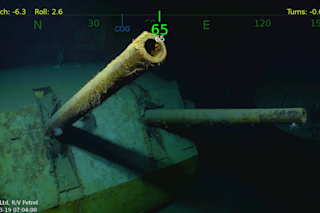A gun turret containing a Mark 12 5-inch gun from the USS Juneau that was discovered as part of the sunken warship's wreckage on March 17, 2018. Credit: Navigea Ltd. One of the most well-known stories of family sacrifice in wartime is the loss of the five Sullivan brothers aboard the light cruiser USS Juneau during World War II. That story resurfaced after an expedition headed by Microsoft co-founder Paul Allen discovered wreckage from the USS Juneau lying on the ocean floor in the South Pacific. Serving together aboard the USS Juneau, the Sullivan brothers were all lost at sea after their battle-damaged warship received a torpedo hit that blew the Juneau in half and killed most of the crew. Their deaths have played into some myths and misconceptions surrounding U.S. military policies on permitting family members to serve together and excusing "sole survivors" from duty. But their loss also ...
WWII Warship Lost with Five Sullivan Brothers Has Been Found
The USS Juneau wreckage reveals the tragic story of the five Sullivan brothers lost during WWII's Guadalcanal campaign.
More on Discover
Stay Curious
SubscribeTo The Magazine
Save up to 40% off the cover price when you subscribe to Discover magazine.
Subscribe













